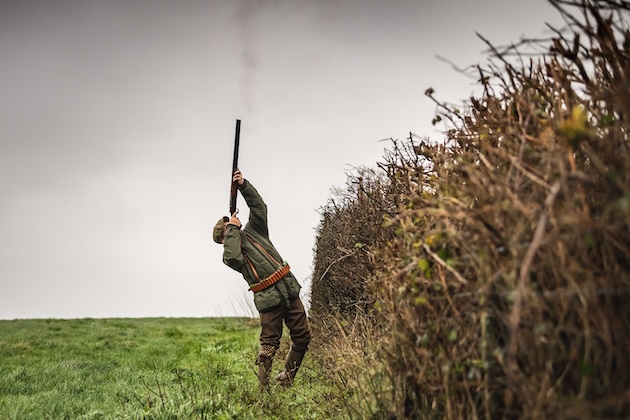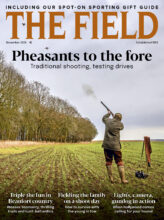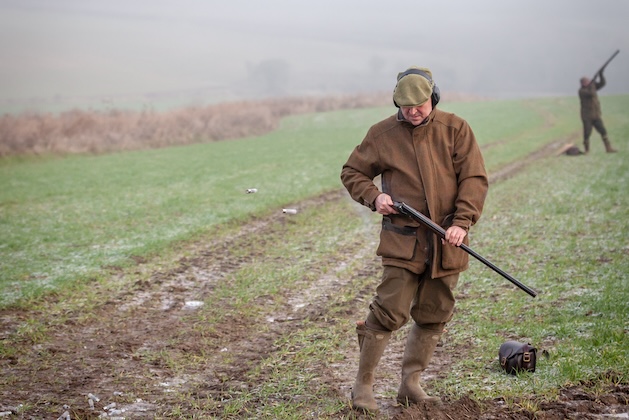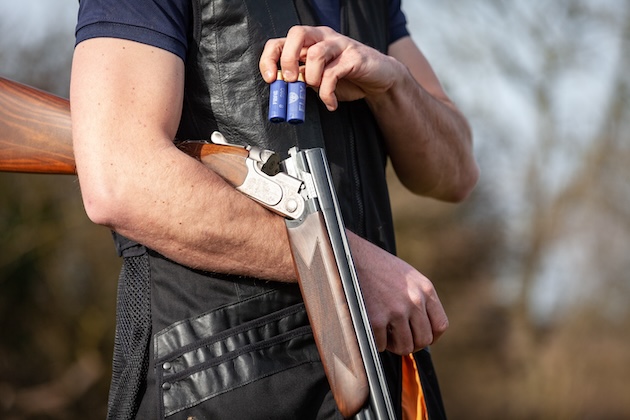Cartridge choice is a conundrum oft debated by a roaring fire after a day in the field, writes Sam Rickitt.
Along with ‘walked up or driven’ and ‘side-by-side or over-and-under’, cartridge choice is something deliberated by sportsmen the world over.
The job of a cartridge is to propel shot through the air consistently and effectively at a target. There is a bewildering variety on offer, as diverse as the types of shooting. Choice can depend on the shotgun used, whether you shoot pigeons over crops for pest control or aiming for those high Welsh pheasants. There are a multiplicity of factors affecting your choice.
Antony Bromwich, Sales Manager at cartridge manufacturer Eley Hawk is unequivocal about the need for a considered approach. “Choosing the right cartridge is vital for achieving consistent performance”, he says, “in managing recoil, and ensuring clean, ethical shooting”.
Gauging it correctly
You must use the correct gauge of cartridge for the bore size of your shotgun. Safety is the most important mantra, as using the wrong gauge can be devastating. In the field, guns may be carrying 12 bores, the little used 16 bore, a 20 or 28 bore. For those guns testing themselves it could be a .410. With such an array out shooting it is vital to never mix different cartridges, and check the right one is being used.
Modern guns typically have a longer chamber length (70 or 75mm) whereas older guns can be 65 or 67mm. Many older side-by-sides were made before longer cartridges were available. Check that your cartridges matches the chamber length. If you are unsure ask advice from your gunsmith.
Shot size
Shot size and weight of load are the key elements in choosing the right cartridge. Load is the gram (or ounce) weight of pellets in a cartridge. The larger the load the more pellets and more recoil you will feel. Shot size refers to the diameter of individual pellets. The higher the number, the smaller the pellet. In 12 gauge for example a 28g size 7 ½ is a smaller shot size typical load used on clay grounds. A 30g 6s is a popular game load.
Breaking clays
In clay shooting, less energy is needed from pellets to smash the clays compared to achieving a clean kill in the field. A typical clay shot size is 7 ½s. For the competitive clay shooter, a 28g load of this smaller shot size means more pellets being sent at the target. Lighter loads such as 21g offer less recoil which is a benefit when shooting large amounts of cartridges or can be less frightening for young guns entering the sport.

Larger loads such as 32g 5s can be used later in the season to take those heavy January pheasants as the birds get stronger and faster.
Shot for game
With game shooting heavier loads and larger shot sizes with more striking power is recommended. The 30g 6s is a much-loved all-rounder in the field, balancing power and pattern density. Early season partridge or grouse can use lighter loads, and smaller birds such as snipe can be cleanly taken with 7s shot. Larger loads such as 32g 5s can be used later in the season to take those heavy January pheasants as the birds get stronger and faster.
Thought must be given to the topography of where you are shooting. Larger shot with heavier loads are typically used to give penetrating power at those higher birds on the hills and valleys of Wales or Yorkshire. Speak to the shoot organiser for their recommendation. Do remember that these heavier loads, especially with your traditional side by side, can be less than forgiving in terms of “kick” to your shoulder.
“At Eley Hawk, we understand that every discipline demands something different” Bromwich explains, “from tight patterns on the clay ground to impact and range in the field”.
Wad
Inside the cartridge is a wad to project shot out of the barrel. The two most common types are plastic and fibre. Whenever game shooting in the field, and at most clay grounds nowadays, a fibre wad is mandatory. There is the alternative of a biodegradable wad such as Eley’s Pro Eco wad, which breaks down into the soil within three months, leaving no trace. As a gun in the field, we have a commitment to look after the countryside we live in.
Non-toxic
The shooting world is gradually moving away from lead towards non-toxic shot. Bismuth is one option, albeit a more expensive alternative. Steel shot is now being increasingly taken up. It is already a legal requirement for shooting over water for wildfowl. It is a complex topic, but typically steel shot size moves up two sizes. Shooting pheasant with 6s lead becomes 4s steel. Crucially your gun must be compatible with steel shot. For high performance steel, the gun must be steel- proofed and display the fleur-de-lys on the barrel, or nitro proofed for standard steel.
You must check with a gunsmith if your chokes are suitable and if in doubt do not use any more than half choke but get advice.

Cartridge selection should always match the type of shooting you’re doing. The right load supports confidence, precision and results
Shoulder friendly confidence
A final consideration is how the cartridge feels whilst shooting. Different manufacturers use different powders with different characteristics. The confidence imbued using a premium cartridge known for its reliability reaps rewards with your aim. A shooter can focus on technique rather than worrying about the cartridge.
Antony Bromwich, Eley Hawk Sales Manager, says “Cartridge selection should always match the type of shooting you’re doing. The right load supports confidence, precision and results.”
Many guns like to use a single brand as they know how they react. They don’t flinch or get distracted when taking a shot, and knowing you are using the right cartridge makes for a happy (and hopefully accurate) day.






